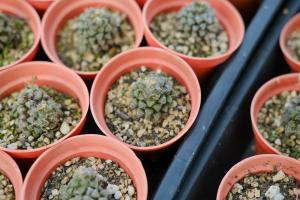Does Plants Lose Water Through Their Leaves?
Plants are a vital part of our ecosystem, providing us with oxygen and serving as the primary source of food for most organisms on the planet. But have you ever wondered how these organisms stay hydrated? The simple answer is that plants lose water through their leaves, a process known as transpiration.
What is Transpiration?
Transpiration is the process by which plants lose water from their leaves. It occurs when water vapor is released through tiny pores called stomata, which are located on the surface of the leaves. The stomata are responsible for regulating the exchange of gases, such as carbon dioxide and oxygen, between the plant and its environment.
As water evaporates from the leaves, it creates a pull or suction force that draws more water up from the roots of the plant. This process is known as the transpiration stream and is essential for maintaining the plant's water balance.
Factors that Affect Transpiration
Several factors can influence the rate of transpiration. One of the most significant factors is the amount of sunlight the plant receives. Plants that are exposed to intense sunlight will often have higher transpiration rates than those that are not.
Other factors that can affect transpiration include temperature, humidity, wind speed, and soil moisture levels. Plants that are grown in dry, windy conditions will typically have higher rates of transpiration than those grown in cool, humid conditions.
The Importance of Transpiration
Transpiration plays a crucial role in the survival of plants. It helps them to maintain their water balance, which is necessary for proper growth and development. If a plant loses too much water through transpiration, it may wilt, become stunted, or even die.
Transpiration is also essential for cooling the plant. As water is lost from the leaves, it helps to lower the plant's temperature. This process is similar to sweating in humans, and it plays an important role in preventing overheating and heat stress.
Conclusion
In conclusion, plants do lose water through their leaves via a process known as transpiration. This process is essential for maintaining the plant's water balance, regulating temperature, and ensuring proper growth and development. Understanding how transpiration works is crucial for anyone involved in plant care, from gardeners to farmers to horticulturists. By providing the right conditions for transpiration, we can help our plants thrive and flourish.

 how many times do yo...
how many times do yo... how many planted tre...
how many planted tre... how many pine trees ...
how many pine trees ... how many pecan trees...
how many pecan trees... how many plants comp...
how many plants comp... how many plants can ...
how many plants can ... how many plants and ...
how many plants and ... how many pepper plan...
how many pepper plan...






























